From the late 1970s to the mid-980s, No Wave cinema, also known as New Cinema, was experimental, transgressive, intimate, raw, underground, immediate, rapid, joyously amateurish, low-budget, fun and above all independent. Taking its name from the influential music genre and the French New Wave, and influenced by the works of Andy Warhol, John Waters, John Cassavetes, George Kuchar, Ron Rice and Jack Smith, the No Wave movement found its home in a decrepit New York City’s Lower East Side of low rents.
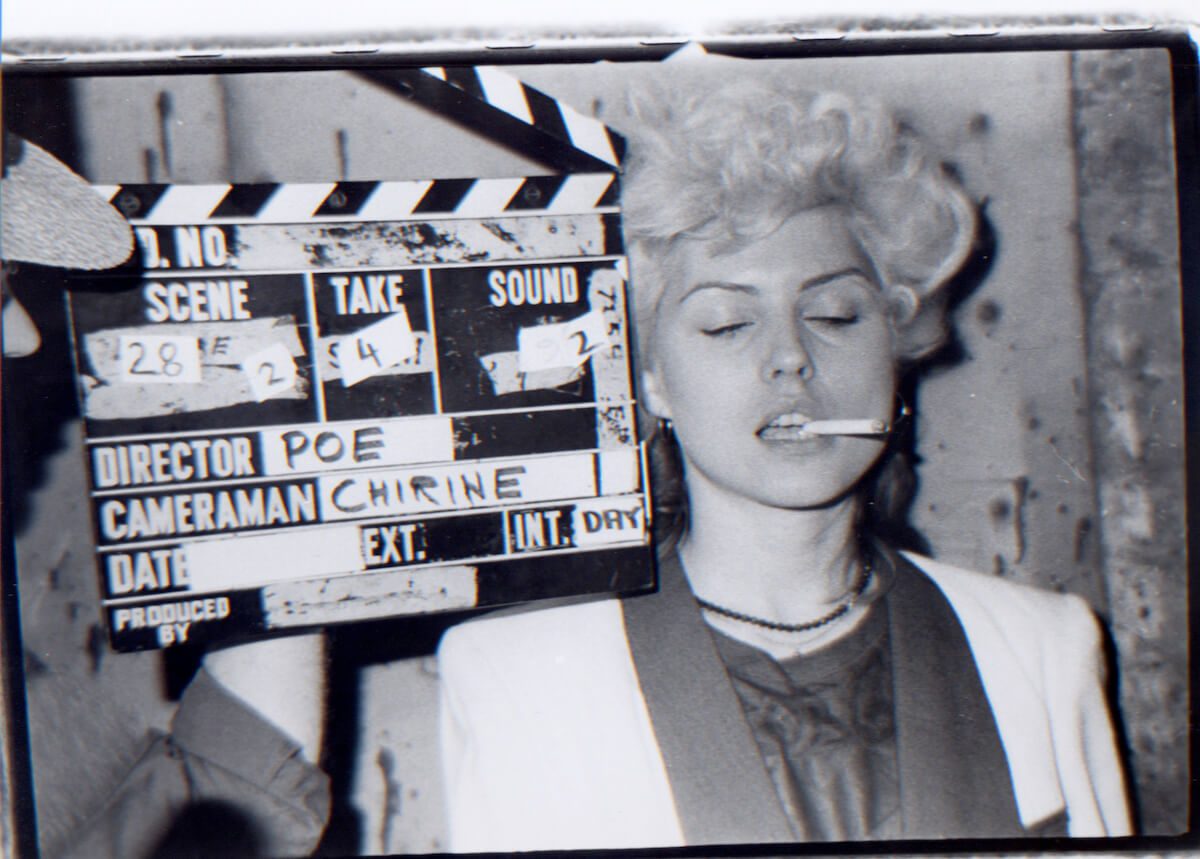
Amos Poe, The Foreigner, Photograph of Debbie Harry, 1977
Filmmakers like Kembra Pfahler, Beth B, Jim Jarmusch, Tom DiCillo, Steve Buscemi, Vincent Gallo, Amos Poe, Nick Zedd, Diego Cortez and Tommy Turner were influenced by the raw energy of punk music and the art world of New York City in the 1960s and 1970s.
These photos of ephemera from the No Wave scene are from Gallery 98, a fabulous treasure trove of food things to buy,
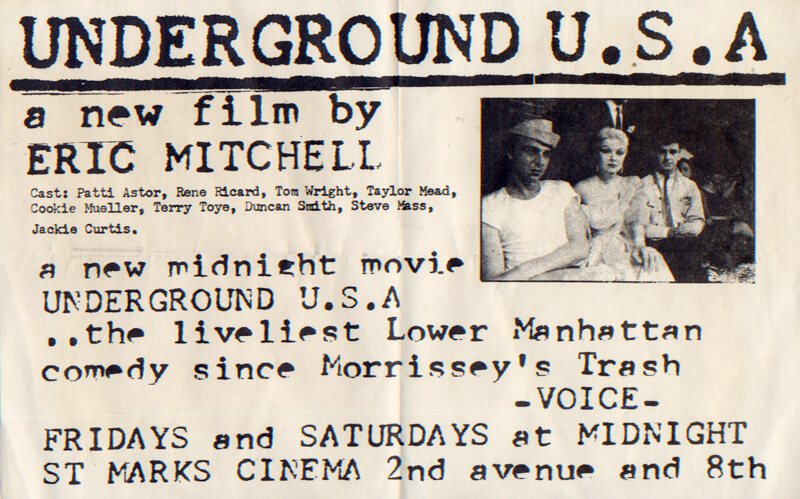
Underground U.S.A., a film by Eric Mitchell with Patti Astor, and Rene Ricard, Film screening, 1980.
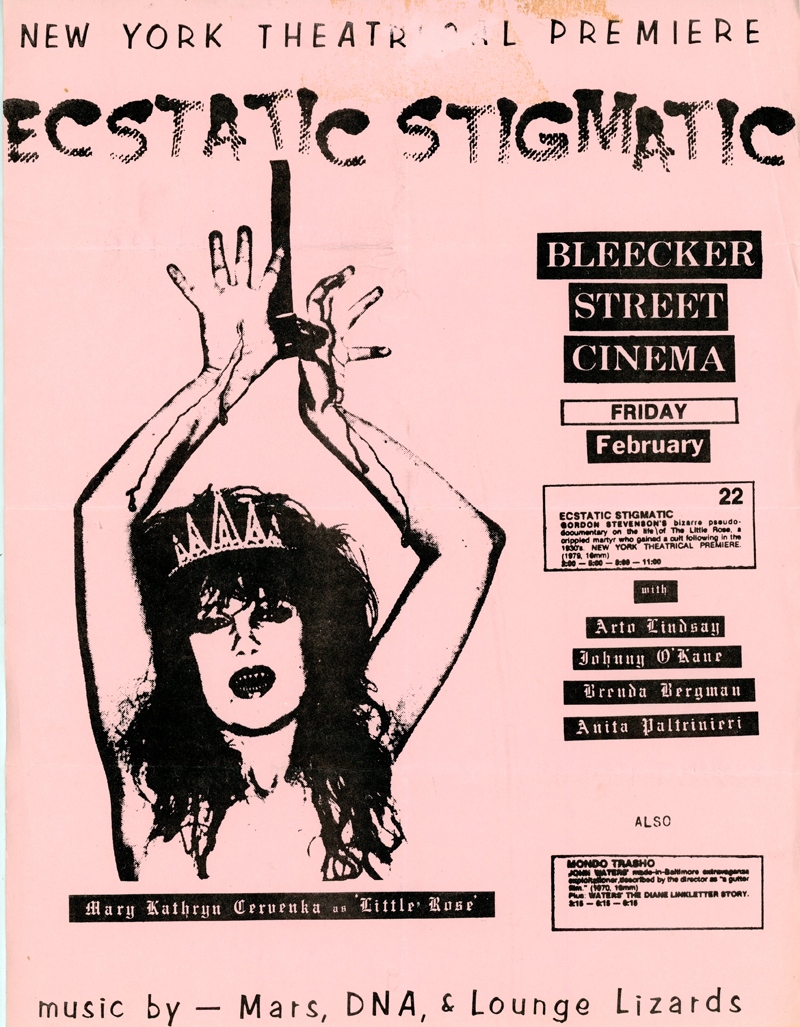
Bleecker Street Cinema, Ecstatic Stigmatic, Gordon Stevenson, Mary Kathryn Cervenka, Arto Lindsay, Flyer, c. 1980
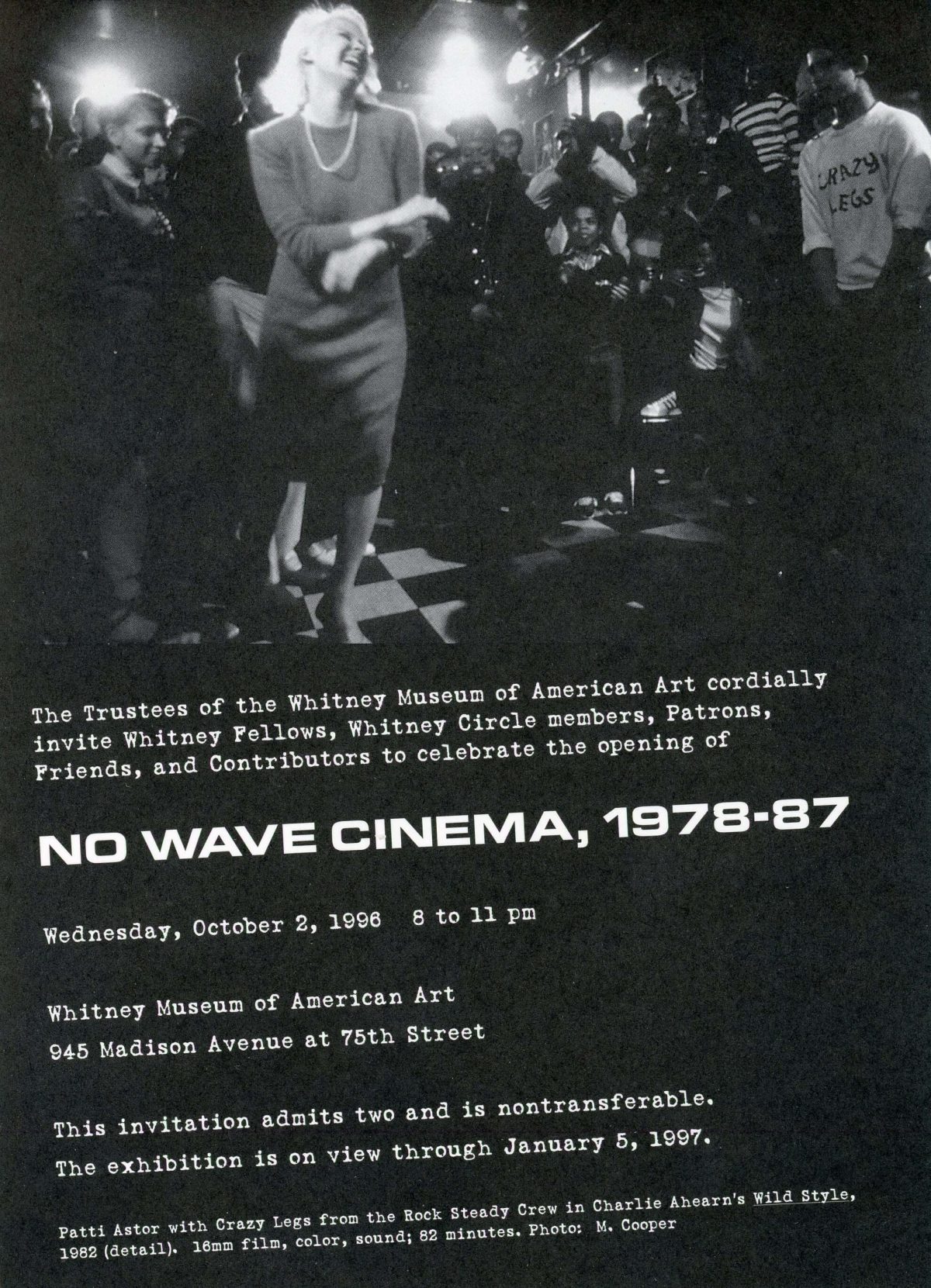
Whitney Museum, No Wave Cinema, 1978-87, Card, 1996
“I’m a self-proclaimed dilettante, and it’s not negative to me, because I’m interested in so many things, from 17th-century English music, to mushroom identification, to various varieties of ferns, to all kinds of stuff… being a dilettante is helpful if you make films, because films have all these other forms in them. I’ve been finding more and more a lot of great directors I love were dilettantes or are…
“My thing is dilettantism, amateurism – I believe that I’m an amateur, because amateur means you do something for the love of a form, and professional means you do it for your job, you get paid, and nothing against that! – and variations. That’s my holy trinity lately of what my defining priorities are: being a dilettante, being an amateur, and appreciating variations in all expression. Because I love variations. To me, it’s the most beautiful form, to accept that all things are really variations on other things.”
– Jim Jarmusch
….
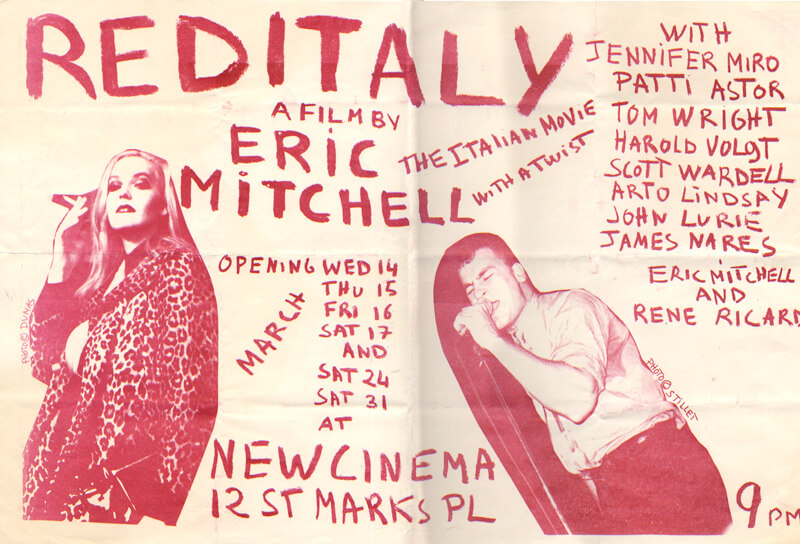
Red Italy, a film by Eric Mitchell, at New Cinema, 1979
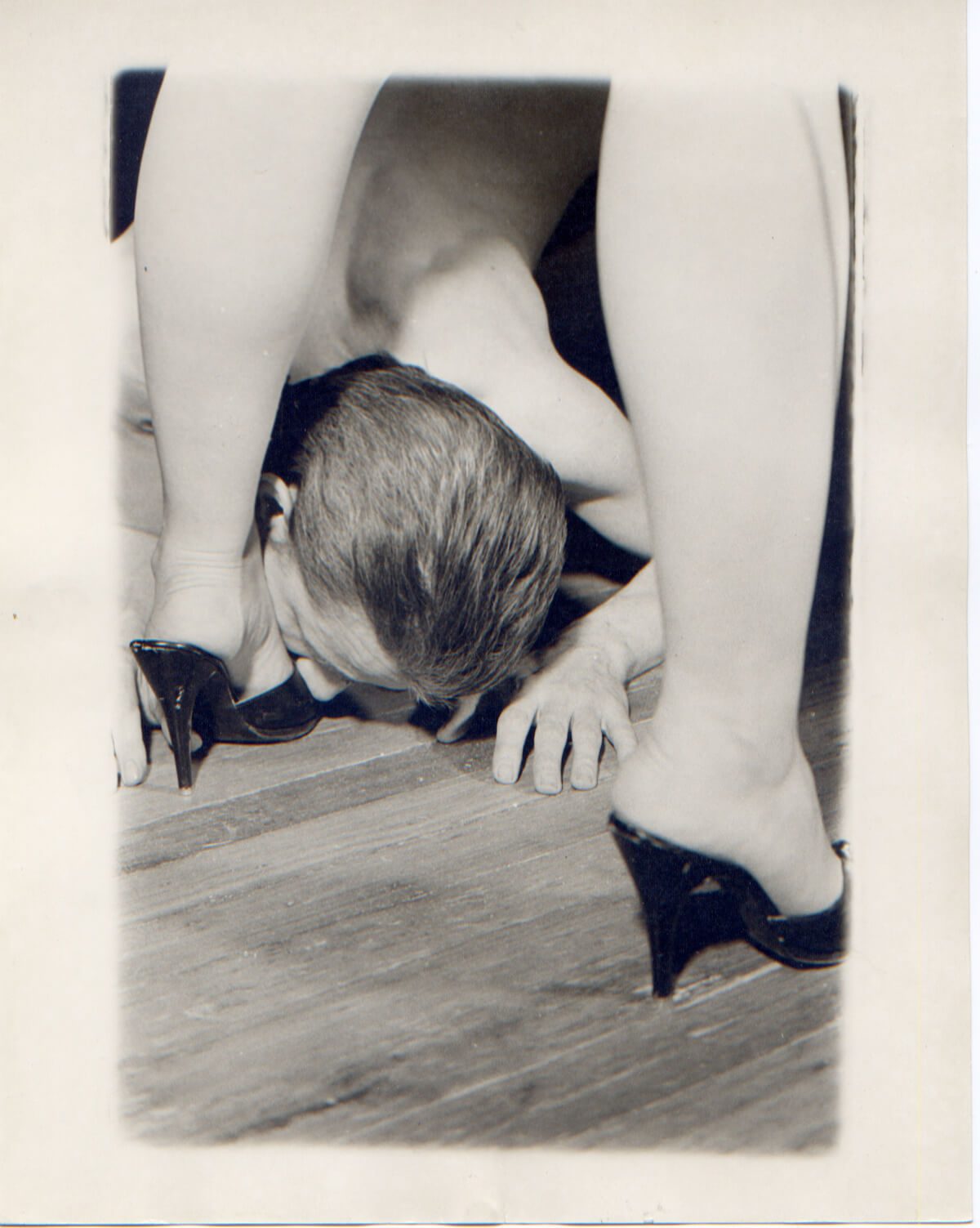
Beth B and Scott B,in Max Karl, Photograph, 1978
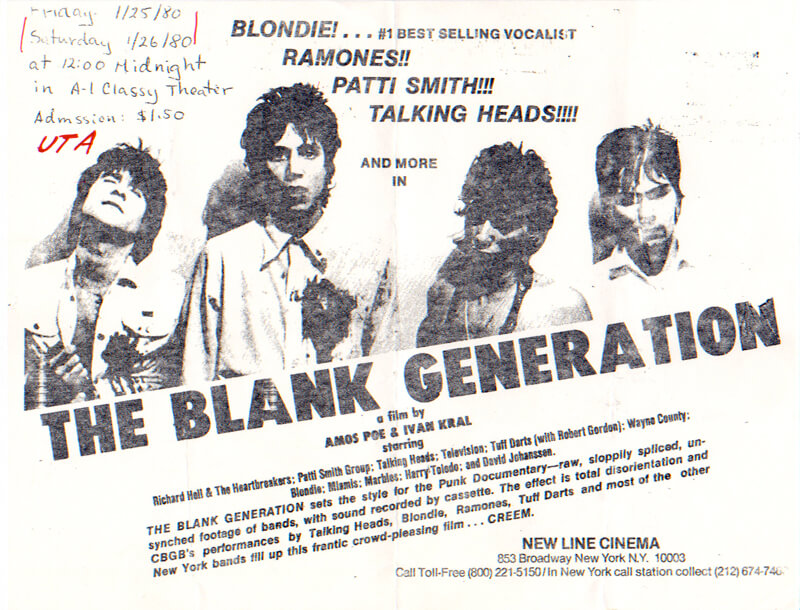
Amos Poe & Ivan Kral, The Blank Generation, Flyer, 1980
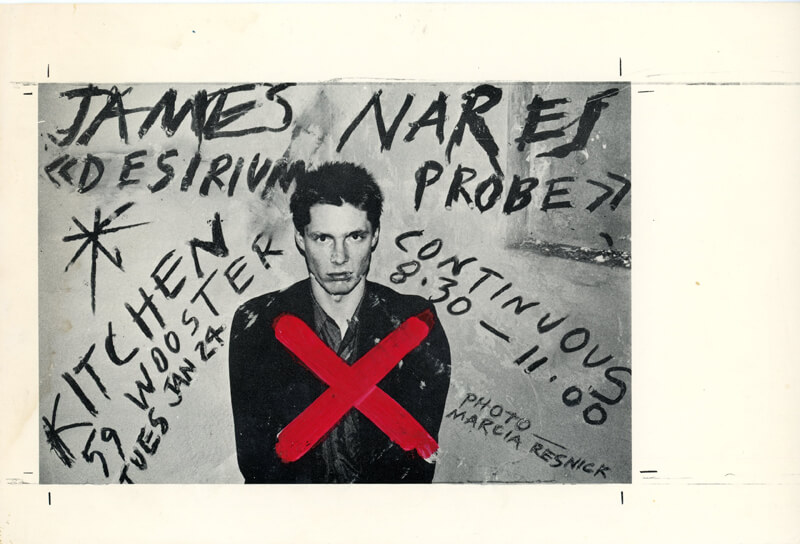
The Kitchen, James Nares, Photo by Marcia Resnick, Desirium Probe, Card, 1978

Gordon Stevenson, Ecstatic Stigmatic, 1980
The backdrop to all the No Wave music and film was New York. The List spoke with Vivienne Dick, the influential filmmaker behind She Had Her Gun All Ready, about being there at the time:
Some parts of it definitely was and looked like Berlin at the end of the War, below Avenue A, B, C, down there. But I didn’t live there; I lived between 1st and 2nd on 9th Street. So where I lived was very much a neighbourhood, people sitting out on the steps and up on the roof; it was a very friendly place. I mean, okay, there was a lot of unemployment at the time and a very bad economy, and there often was the danger of getting mugged, but it wasn’t so bad that you’d worry about it, and in fact we didn’t really take it seriously. I didn’t at all feel in danger there, it wasn’t a bit like that, it was very much a social place. Much more so than London is. Or perhaps maybe like over by Brick Lane, where everyone’s on the street. It’s a bit like that.
Lydia Lunch has offered her take on 70s NYC:
“It was a drug fueled, blood soaked, pornucopia of art terrorists documenting their personal descent into the bowels of an inferno in a city which felt like the lunatics had fuckin’ taken over the asylum.”
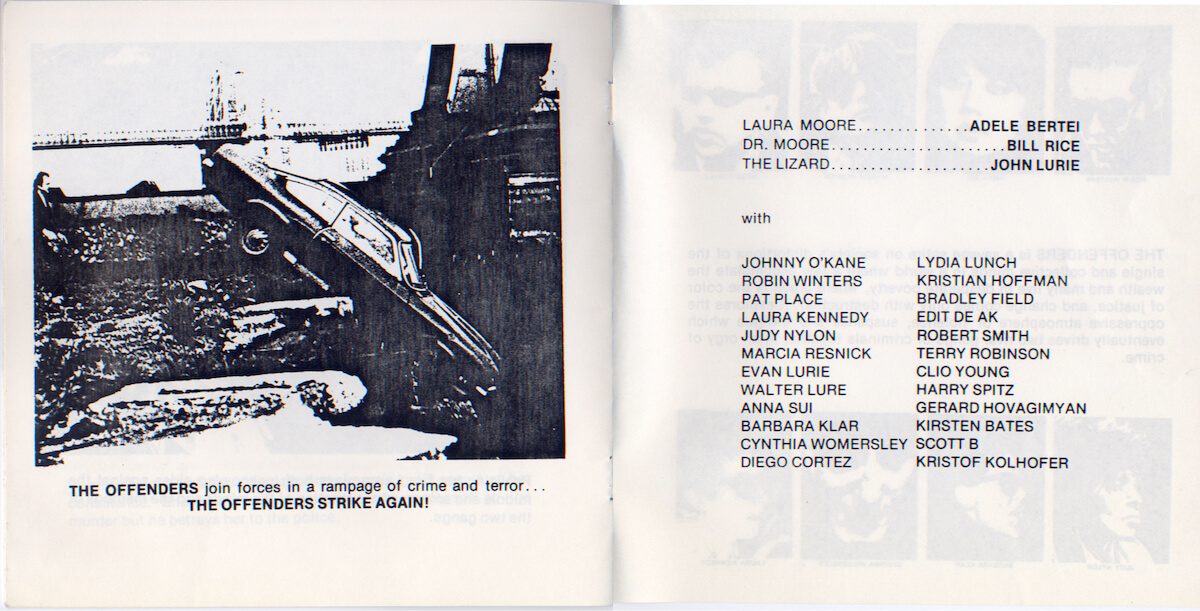
The Offenders booklet
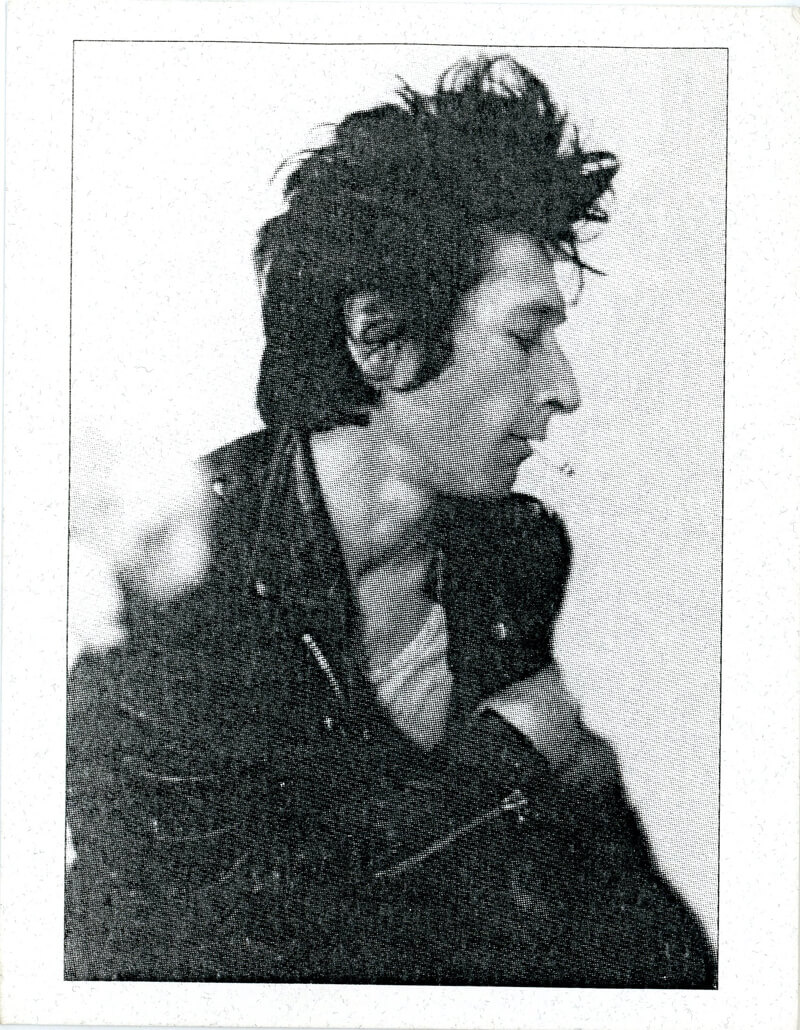
Johnny Thunders, Portrait From the Rachel Amodeo Film “What About Me,” Card, Provisional (Wyoming), ND
…
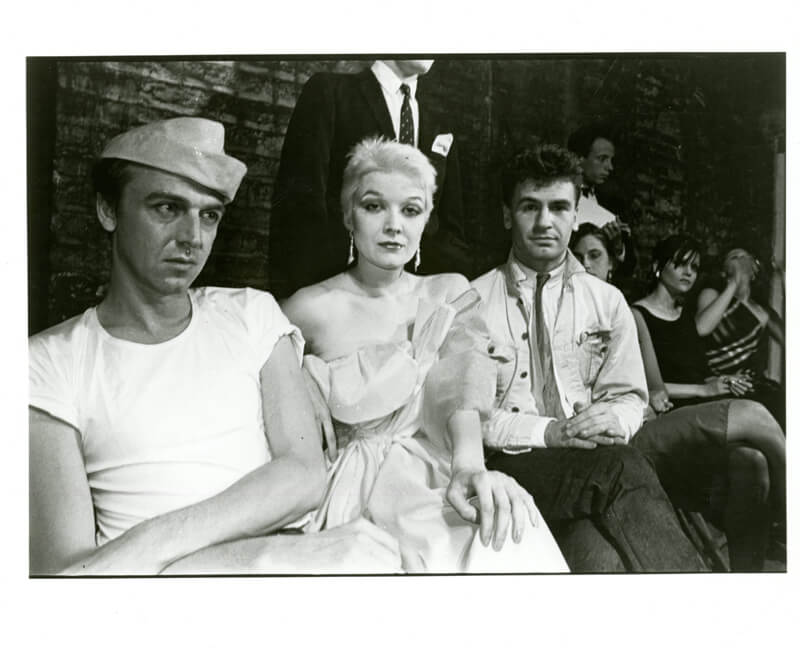
Publicity Photo for Underground USA, Rene Ricard, Patti Astor, Eric Mitchell (Director), 1980
In its early days the Mudd Club was a central gathering spot for the downtown No Wave film scene. Poet and actor Rene Ricard (1946-2014), actress Patti Astor, and filmmaker Eric Mitchell were all regulars at the club. This publicity still for Underground USA (1980) directed by Mitchell was photographed at the Mudd Club where a number of scenes in the film were shot.
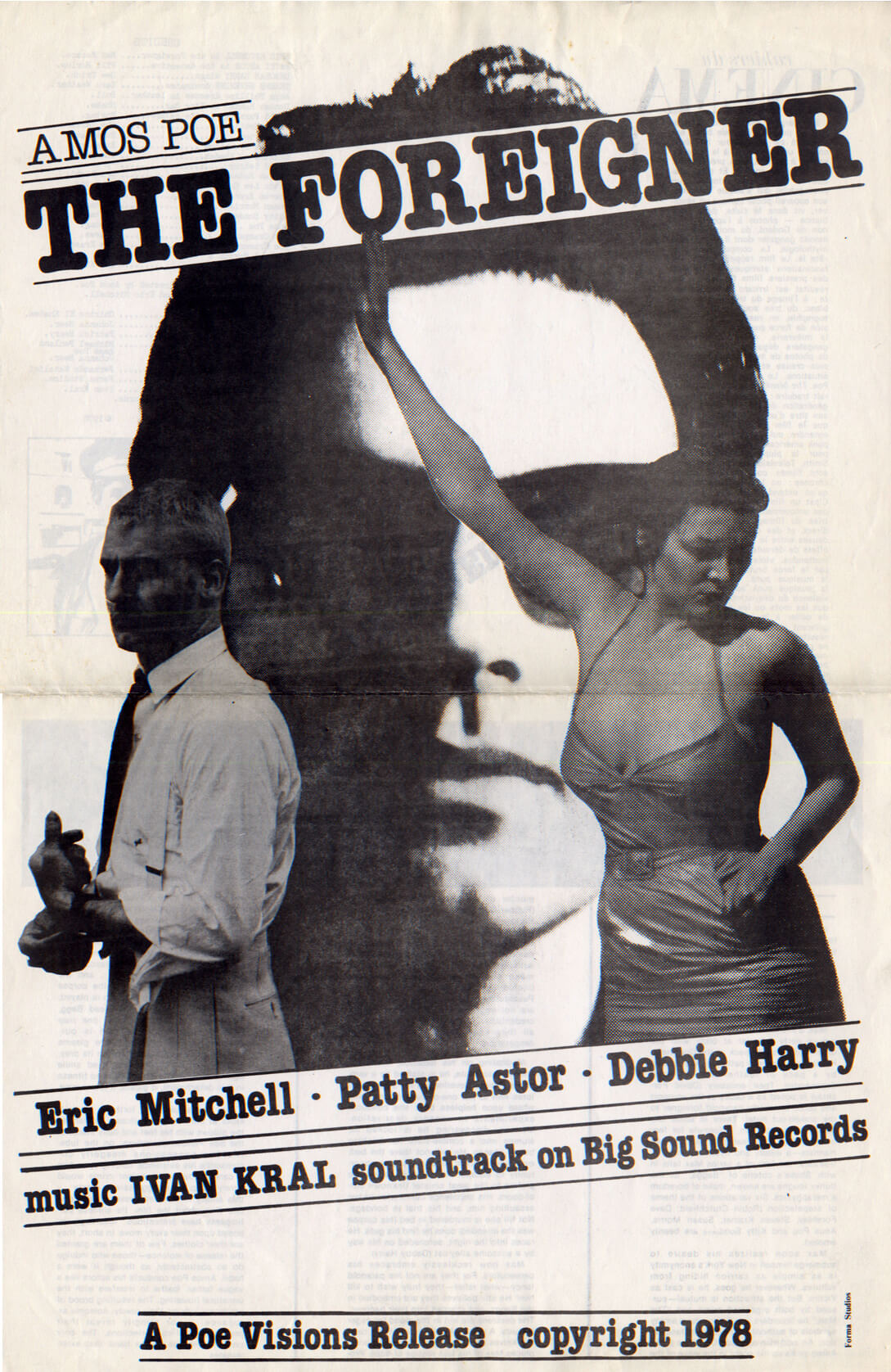
Amos Poe, The Foreigner, 1978
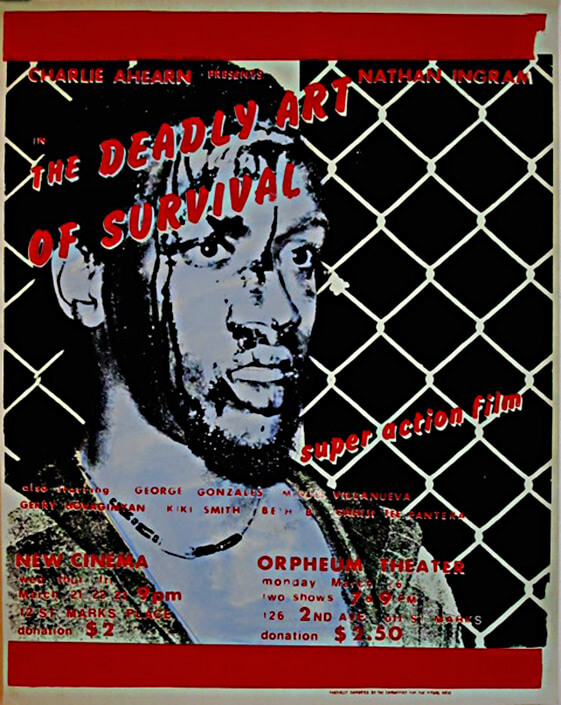
Charlie Ahearn, The Deadly Art of Survival, Silkscreen Poster, 1979
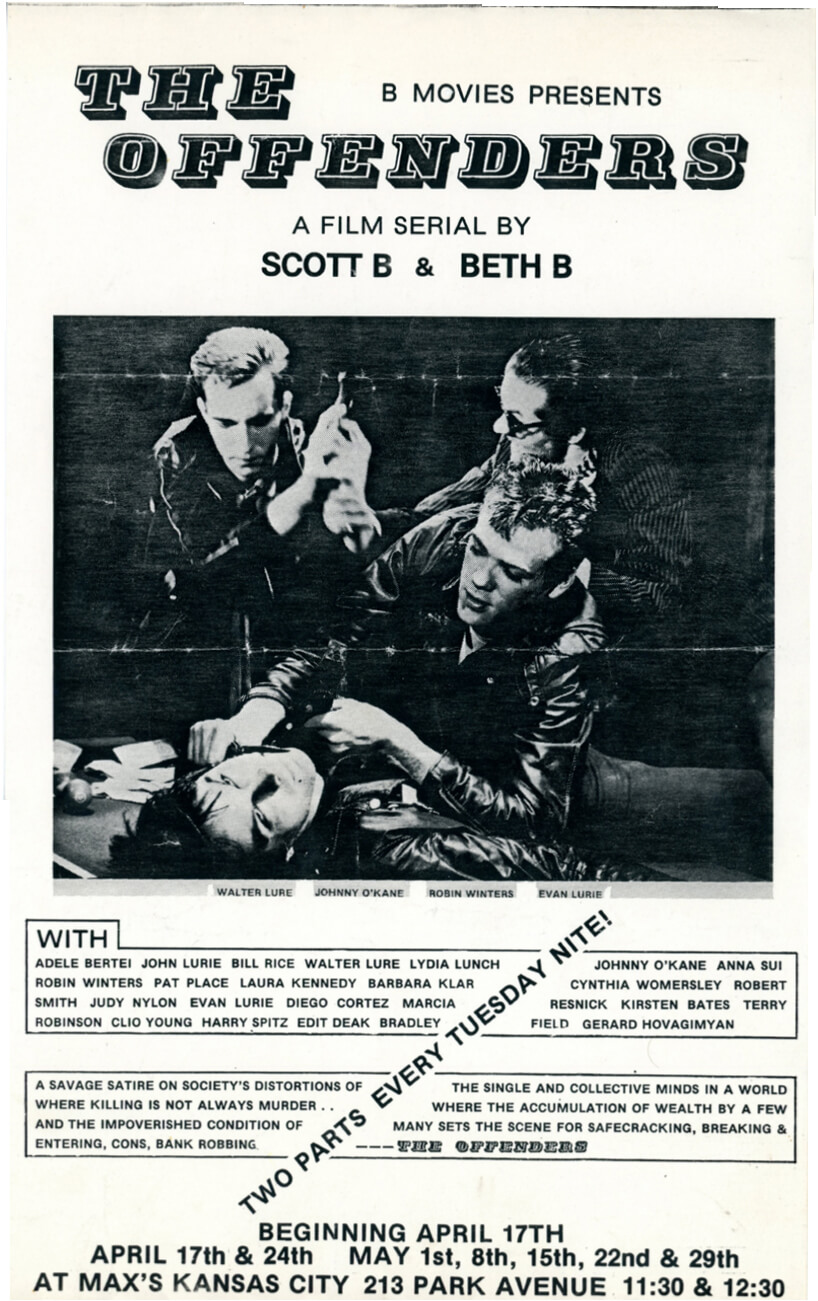
Max’s Kansas City, Scott B and Beth B, The Offenders, Flyer, 1980
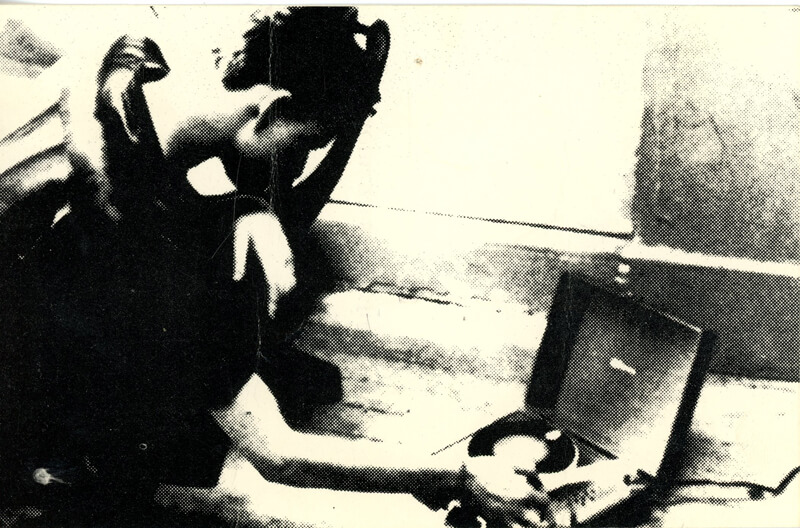
Cinesthesia, Jim Jarmusch, Permanent Vacation, Card, 1980
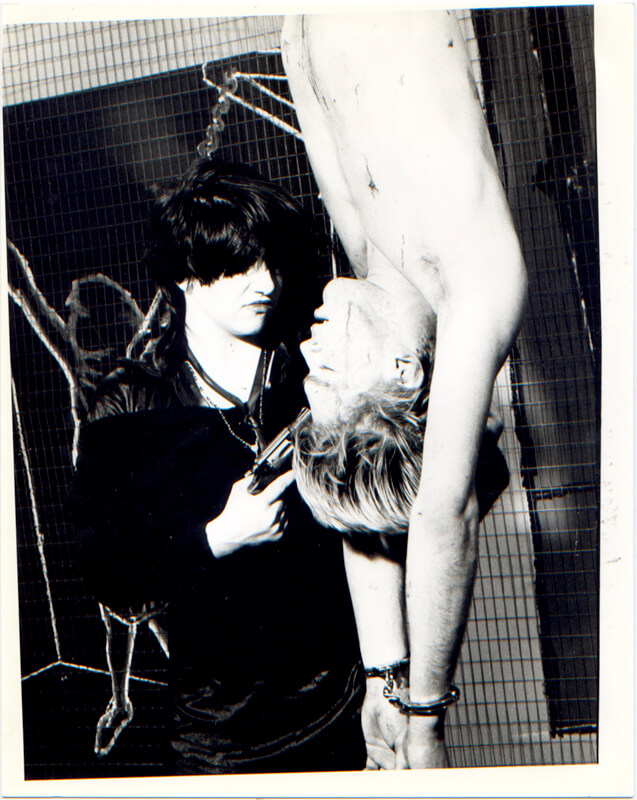
Beth B and Scott B, Black Box, Lydia Lunch and Bob Mason – 1979
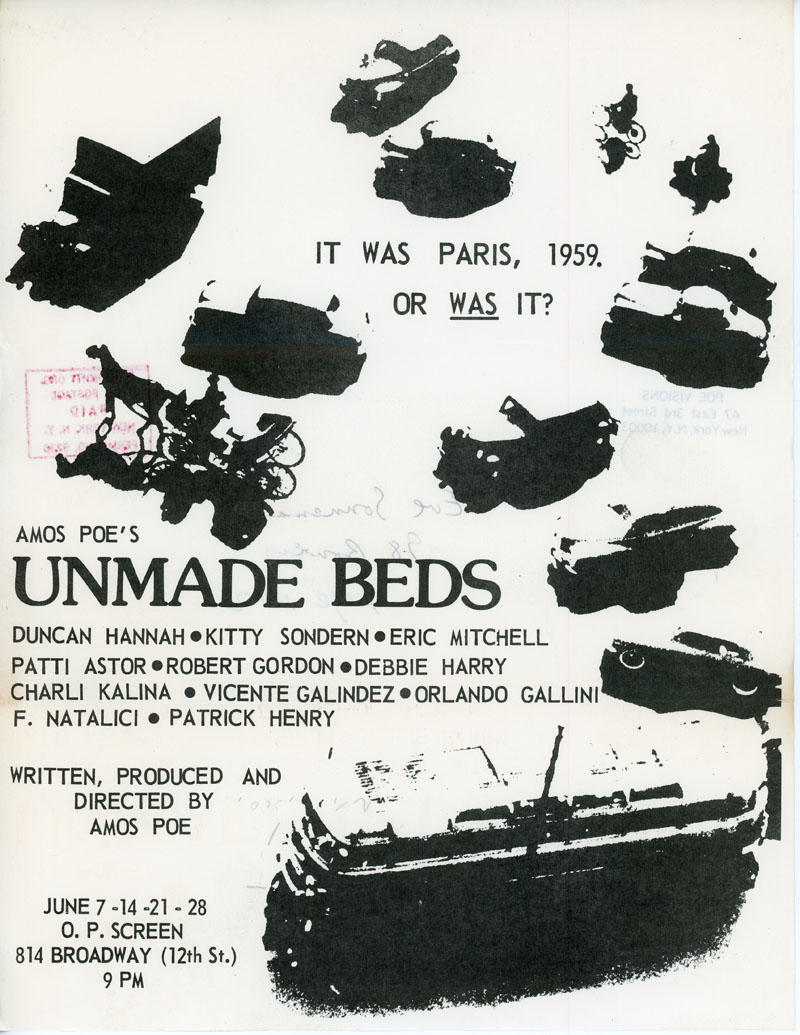
Amos Poe, Duncan Hannah, Eric Mitchell, Debbie Harry, Unmade Beds, Flyer, 1976
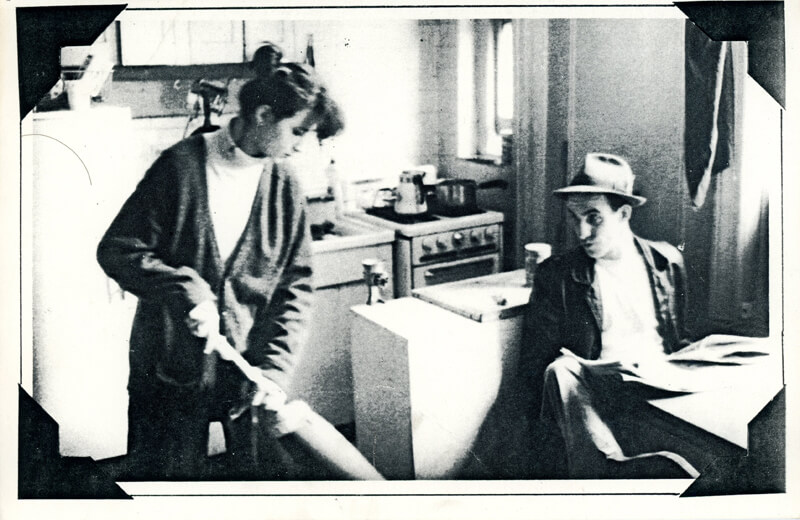
Danceteria, Jim Jarmusch, John Lurie & the Lounge Lizards, Ester Balint, Stranger Than Paradise Screening Party, Card, 1982

Danceteria, Jim Jarmusch, John Lurie & the Lounge Lizards, Ester Balint, Stranger Than Paradise Screening Party, Card, 1982. This screening party was for the 30 minute version of Stranger Than Paradise, which was briefly screened before the release of the feature length film in 1984.

Arena Puccini, New(o No) Wave, Curated by Diego Cortez and Edit DeAk, 3-Fold Brochure, 1980
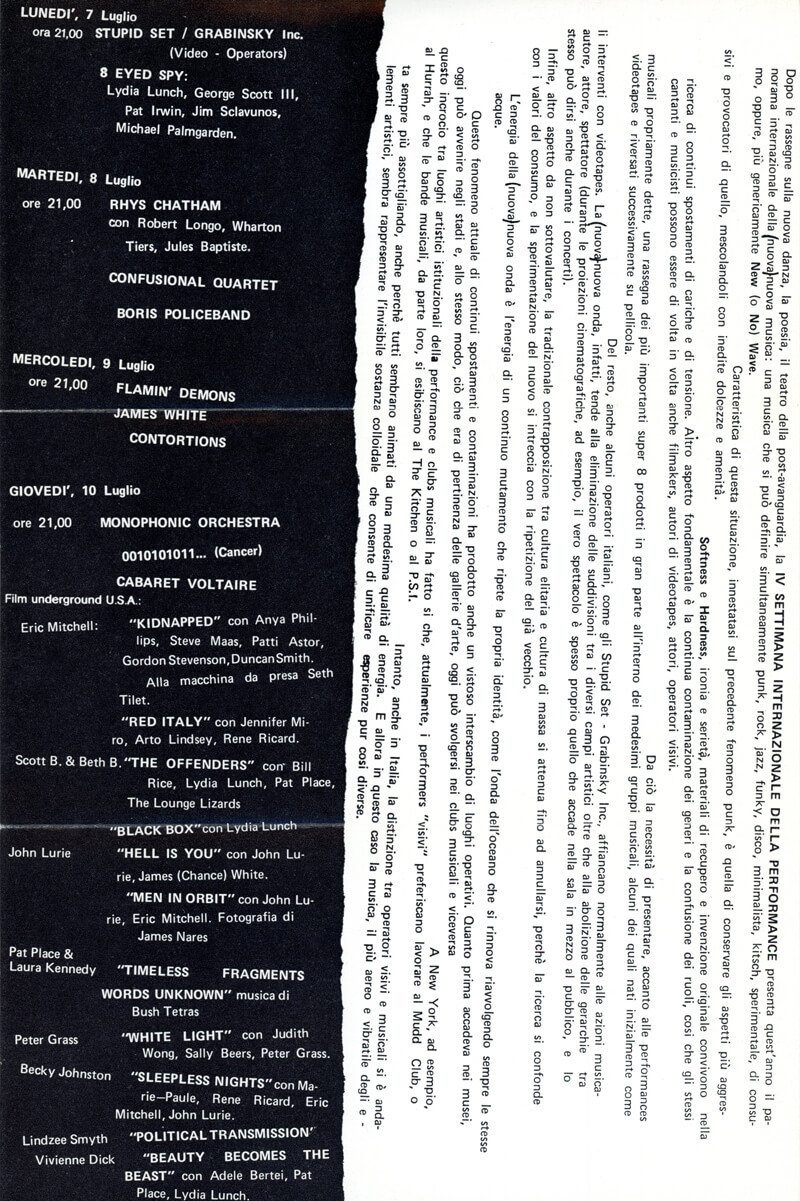
Arena Puccini, New(o No) Wave, Curated by Diego Cortez and Edit DeAk, 3-Fold Brochure, 1980
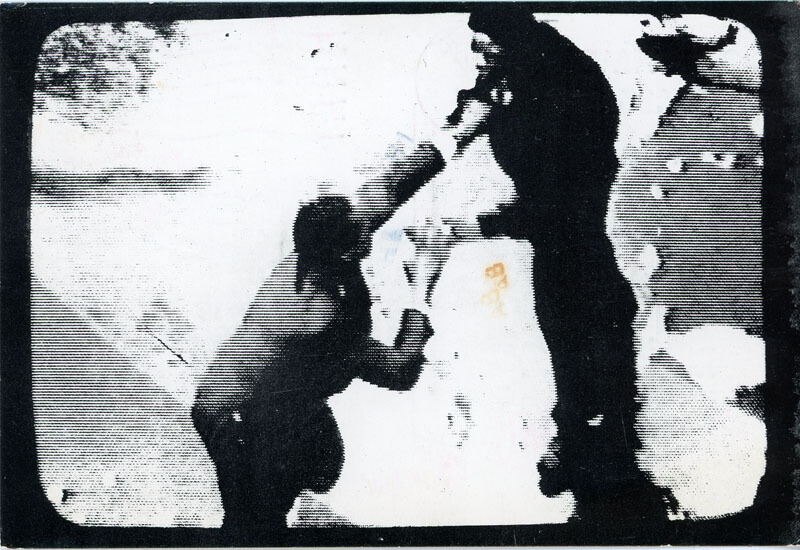
Anthology Film Archives, Charlie Ahearn, Doin’ Time in Times Square, Card, 1991
.In 2010, French filmmaker Céline Danhier created a documentary film titled Blank City. The film presents an oral history of the no wave cinema and Cinema of Transgression movements[35] through interviews with Jarmusch, Kern, Buscemi, Poe, Seidelman, Ahearn, Zedd, John Waters, Blondie’s Debbie Harry, hip-hop legend Fab 5 Freddy, Thurston Moore of Sonic Youth, and Jack Sargeant. The soundtrack includes music by Patti Smith, Television, Richard Hell & The Voidoids, James Chance and the Contortions, Bush Tetras and Sonic Youth.[36][37]
In 2011, the Museum of Arts and Design celebrated the movement with the retrospective “No Wave Cinema”, which included works by Jarmusch, Kern, Mitchell, Poe, Zedd, Scot and Beth B., Lizzie Borden, Edo Bertoglio and Kembra Pfahler.[38][39]
Like the later Dogme 95 creative movement, No Wave Cinema has been described as a defining period in low budget film production.[40]
Would you like to support Flashbak?
Please consider making a donation to our site. We don't want to rely on ads to bring you the best of visual culture. You can also support us by signing up to our Mailing List. And you can also follow us on Facebook, Instagram and Twitter. For great art and culture delivered to your door, visit our shop.



